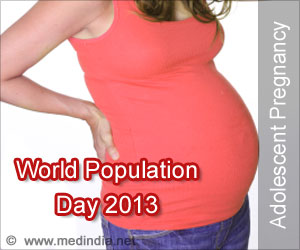World Population Day is celebrated across the globe on 11th July every year. It aims to raise awareness about the current population crisis. Reducing the population will ensure a better life for everyone
- World Population Day is celebrated every year on 11th July
- It aims to raise awareness about the dangers of overpopulation
- Population reduction is urgently required for betterment of the lives of everyone on the planet
Read More..
History of World Population Day
World Population Day was established in 1989 by the Governing Council of the United Nations Development Program. This was inspired by the Day of Five Billion, which was observed on 11th July 1987. On this day, the world population reached 5 billion. Through a resolution (A/RES/45/216) passed at the 71st Plenary Meeting of the United Nations General Assembly on 21st December 1990, it was decided that the World Population Day should be a permanent annual event, which is to be celebrated on 11th July every year for enhancing awareness about population issues, including its impact on the environment and global economic development.United Nation’s Contribution to Addressing World Population Issues
The United Nations (UN) addresses all global population issues through its Population Division and the United Nations Population Fund (UNFPA). The UN Population Division is the nodal point of contact for all stakeholders to hold consultations with the UN on all matters related to the world population. The UNFPA works both within and outside the UN system by interacting with governments, non-governmental organizations (NGOs), key decision makers, community and religious leaders, as well as civil society, to implement programs and achieve its goals. Importantly, the UNFPA funds country-led initiatives pertaining to population control, such as family planning and reproductive health.Focus of the 2019 World Population Day
Every year, the UN chooses a specific theme that focuses on a particular aspect of the issues associated with the world’s population. The 2019 World Population Day does not have any specific theme. This year, the UN draws the attention of the global community to address the unfinished agenda of the 1994 International Conference on Population and Development, which took place 25 years ago in Cairo, Egypt. In this historic conference, 179 governments across the globe reached a consensus that gender equality and reproductive health are vital for attaining sustainable development. This is the basis of the Program of Action that forms the foundation of all activities conducted by the UNFPA. Notably, the UNFPA is convening a high-powered intergovernmental conference in Nairobi, Kenya in November to address these unmet goals.World Population Day Activities in Three Countries – A Snapshot
- New York, USA: A variety of activities are planned in New York, which is the UN’s Headquarters. A high-level meeting is being organized, where government representatives from across the world will meet to discuss global population issues in the context of the Sustainable Development Goals (SDGs)
- London, UK: In the UK, the fast rate of population growth, coupled with high consumption levels is disproportionately affecting the global environment. In order to address this issue, the UK government’s Department for International Development (DFID) is expediting efforts to achieve the SDGs in a time-bound manner
- Lagos, Nigeria: Nigeria is the highest populated country in Africa. It is projected that Nigeria will overtake the US and become the third most populous country in the world by 2050. On World Population Day, the Nigerian Conservation Foundation (NCF), a Nigerian NGO dedicated to nature conservation and sustainable development, will host a round-table conference with campaigners and government representatives to discuss the impact of unsustainable population growth at the national and international levels
World Population: Facts & Figures
- The current world population is 7.7 billion
- The current population of India is 1.37 billion or approximately one-sixth of the world population
- 83 million people are being added to the world’s population every year
- The world population is expected to reach 8.6 billion by 2030, 9.8 billion by 2050, and 11.2 billion by 2100
- 60 percent of the world’s population resides in Asia
- 17 percent of the world’s population resides in India
- India will become the world’s most populous country by 2024
- A billion people or one-eighth of the world’s population live in hunger
- 2 million children die of malnutrition annually
- 10 percent of the world’s population don’t have access to proper sanitation
- 30 percent of the world’s population is due to unwanted or accidental pregnancies
- Population, when unchecked, doubles every 25 years or increases in a geometrical ratio
- The world population can be stabilized by eliminating 350,000 people daily
Major Drivers of Population Growth
World Population Day aims to highlight the precarious condition that the world is currently in due to the population explosion, which is spiraling out of control. It also aims to focus the world’s attention on the major factors that have a direct or indirect impact on population growth across the globe. Some of these are highlighted below:- Fertility Rate: This is the biggest factor that affects population growth – higher the fertility rate, the larger the population. The fertility rate is a reflection of the reproductive health of women in a particular country, which has a direct bearing on maternal and child health
- Mortality Rate: This is a measure of the number of deaths occurring over a specific period of time. If the death rate is higher than the birth rate, then the population will decrease. Unfortunately, this doesn’t reflect the current real-life scenario
- Life Expectancy: The life expectancy at birth is an estimate of the expected lifespan of a newborn baby. With advancements in medicine, the average life expectancy has appreciably increased over the decades, which has contributed to overpopulation
- Family Planning: Lack of access to safe and effective family planning methods such as contraception, has led to an increase in unwanted pregnancies
- Education: Education is a powerful factor that has a far-reaching impact on population growth. In this regard, the education of girls is vital. They should receive sex education, which will help prevent adolescent pregnancies, which currently stands at 15 million annually in the age group of 15-19 years. Both girls and boys should also have knowledge about sexually transmitted diseases (STDs)
- Economic Development: Developing countries with weak economies tend to have a larger population. For example, agricultural-based societies look upon children as extra helping hands who can perform household chores and help in harvesting crops
- Social & Cultural Norms: In many societies, child marriage is still rampant, despite efforts to stop it. Also, in many countries, including India, joint families have traditionally been the norm. However, nowadays, there is a trend towards nuclear families, with fewer family members
- Immigration: High levels of immigration can drastically increase the population size of the host country. This is true for host countries like the UK and USA. However, in countries like Japan, which has strict immigration laws, there has been a stagnation in the population over the years
- Gender Equality: In countries where gender equality is lacking, women do not have a voice in matters of health, including reproductive health, which leads to a larger family size
- Human Rights: Violation of human rights, particularly the right to health, can have a dramatic influence on population growth, both nationally and globally
- Poverty: Poverty is at the root of many social evils. Among other things, it can lead to an increased birth rate, which can significantly increase the population size
The Way Forward
Some of the ways to address the current global population crisis include the following:- Birth Control: There should be universal access to safe and effective contraceptive methods for both men and women. Moreover, voluntary sterilization, such as tubal ligation for women and vasectomy for men should be encouraged, particularly when a couple already has two children
- Family Planning: Having a small family size is important for keeping the nation’s population down too. In this regard, the popular Indian family planning slogan “Hum do, hamare do” (Us two, our two) is very appropriate
- Compulsory Education: Compulsory education till the secondary level (16 years of age), as in most developed countries, will mean that children are no longer economic assets, but economic liabilities. Therefore, the high cost of bringing up a child will discourage parents from having a large family
- Women Empowerment: Women should be empowered so that they can make informed choices about family planning
- Gender Equality: Gender bias should be eradicated at all levels – law, economic opportunity, health, and culture. Women who are on equal terms with men in all these aspects, are more likely to postpone childbearing and have fewer children
- Sex Education: Adolescents, especially girls, should be educated about sexual issues, such as avoiding unwanted pregnancies, delaying marriage, and the dangers of STDs
- Policy Reforms: There is a need to end all government policies that reward parents financially for having a higher number of children
- Legislations: Proper implementation of laws upholding child rights is urgently required. These include legislations against child labor, child trafficking, and child sexual abuse, among others. Strict implementation of these laws will ensure a better future for children
- Taxation: Higher taxation of parents with more than 2 children will automatically reduce family size and encourage nuclear families
- Political Will: There is a need for greater political will for stabilizing population growth through the exercise of human rights and human development
Conclusion
From the foregoing discussion, it is evident that overpopulation is a problem that creates many other problems. Overpopulation leads to overexploitation of finite natural resources. Space for accommodation is also finite, which is being reflected in overcrowding, especially in urban areas. So, on World Population Day, let’s join hands to control the population to make life better for each and everyone on the planet.References:
- World Population Day: 11 July - United Nations - (https://www.un.org/en/events/populationday/index.shtml)
- Nine Population Strategies to Stop Short of 9 Billion - Worldwatch Institute, USA - (http://www.worldwatch.org/nine-population-strategies-stop-short-9-billion)
- World Population Day 2019 - UNFPA: Asia & the Pacific - (https://asiapacific.unfpa.org/en/events/world-population-day-2019)
- Main Factors Driving Population Growth - Pew Research Center, USA - (https://www.pewforum.org/2015/04/02/main-factors-driving-population-growth/)
- World Population Day - Population Matters, UK - (http://populationmatters.org/events/world-population-day)
- Factors that Affect Population Size and Growth - Economics Help, UK - (https://www.economicshelp.org/blog/469/development/factors-effect-population-size-and-growth/)
Source-Medindia










